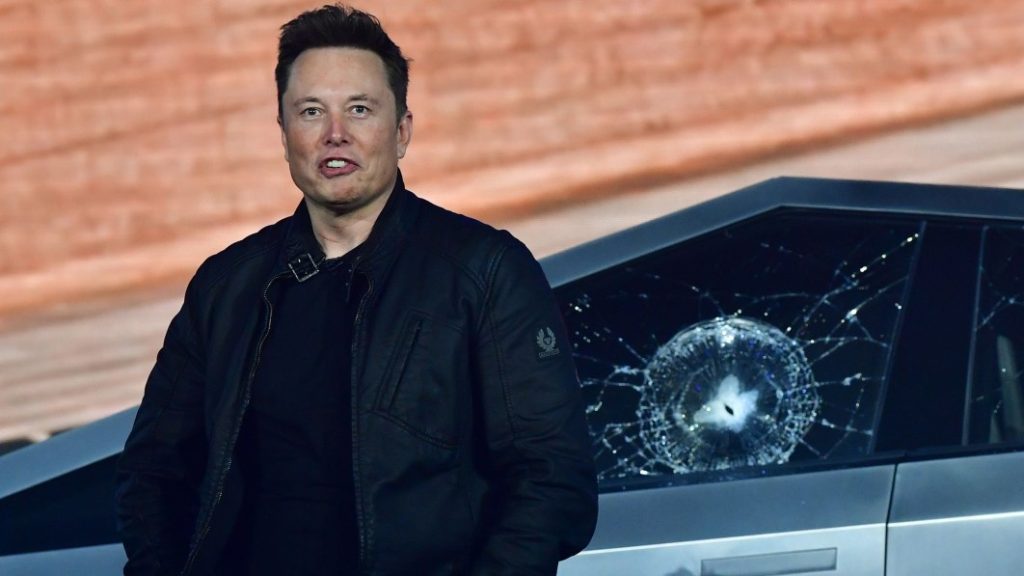Tesla's struggles in China and Europe may be a preview of the pain coming for Elon in the US

Tesla CEO
Elon Musk, his Cybertruck, and some shattered windows.
Frederic J. Brown/Getty Images
Bloomberg reported this week that Tesla would scale back production at its Shanghai factory.
Tesla is being outsold in both the Chinese and the European markets as competitors press in.
While Tesla has 67% market share in the US, S&P Global predicts it will hit 20% by 2025.
What’s Elon Musk to do when electric-vehicle makers start vying for Tesla’s top spot in the US? That’s a question investors will follow as Tesla faces steep competition in China’s and Europe’s EV markets.
Bloomberg reported Tuesday that Tesla planned to scale back production of its popular Model Y car by 20% at its Shanghai factory, one of its largest sites. A Tesla representative said the report was “untrue.” Regardless, UBS and Deutsche Bank analysts have said an output-cutting measure is a good move for Tesla, as the EV-car market in China shows signs of softness.
Tesla’s Shanghai factory sold 100,291 electric cars in November, setting a monthly record for the company and putting it on track to double the previous year’s production of 484,130, Xinhua, China’s state news agency, reported. Reaching those numbers required cuts of up to 9% of the Model 3 and Model Y sale prices, Reuters reported.
But Tesla didn’t sell the most electric vehicles to Chinese customers in November. BYD, a Chinese automaker and global EV market leader backed by Berkshire Hathaway, did, selling 229,942 EVs, or more than double what Tesla sold.
To boost December sales and clear inventory, Tesla’s China operations cut its prices again, despite announcing on its WeChat page that it wouldn’t offer discounts again in 2023.
Patrick Hummel, the global head of autos at UBS, thinks more promotional sales will come. He wrote in a report Tuesday: “Further pricing action to stimulate more demand and or gain market share cannot be ruled out.”
Emmanuel Rosner, the lead auto and auto-technology analyst at Deutsche Bank, said in his report: “It makes sense for Tesla to be prudent on production as local demand is generally under pressure.”
Tesla’s inventory woes seem to be a result of China’s slowing economic growth. Continuous COVID-19 lockdowns and inflation are taking their toll on the pockets of Chinese consumers. The National Bureau of Statistics of China’s purchasing managers index for November dropped below 50% to 48%, indicating a recession.
Rosner also wrote in his report that China’s cash subsidy for EVs helped boost industry sales, but it will expire before the new year. If the government chooses not to extend the subsidy, that will additionally weaken demand for Tesla’s Shanghai inventory.
Strong competition in China and Europe
Musk’s auto company faces similar battles in Europe, the second-biggest EV market, behind China.
An October Counterpoint report found that Tesla’s second quarter sales fell over 50% from the year before. A significant factor was its pandemic-induced supply-chain issues in China.
While Tesla opened a factory in Berlin to meet rising demand from European consumers, it just opened in March, and a significant portion of its inventory is imported from China. And while Tesla’s Model Y was Europe’s second-best-selling EV, it came in a distant second earlier this year to the Italian automotive manufacturer Fiat’s Fiat 500e model.
Globally, Tesla’s Model Y led the market last quarter, making up 7.5% of EV sales, Counterpoint reported. Models from Volkswagen, BYD, and the joint venture SAIC-GM-Wuling also made it into the top 10.
Tesla leads the US — but for how long?
That Tesla can have the world’s most popular EV model, in the Model Y, and still lose in overall sales indicates a weakness in Tesla’s relatively slim lineup, with just four models for sale. Competitors like Volkswagen, Ford, and General Motors all either offer or plan to offer a wider variety of vehicles at several price points and for various use cases, while Tesla’s next addition to its lineup, the Cybertruck, has been delayed multiple times, and the Roadster is even further out.
Competition is chipping away at Tesla’s market share in the US, too. Tesla still dominates the country with a 64% market share. But that percentage was 71% in 2021 and 79% in 2020. For now, traditional automakers like Ford and Chevrolet are gaining traction as more affordable alternatives to Tesla.
S&P Global Mobility predicts Tesla’s market share will drop to 20% by 2025. Stephanie Brinley, an associate director of S&P Global Mobility’s AutoIntelligence, said in a statement that Tesla’s brand and unit sales would continue to thrive, while competitors were “bound by production capacity.”
Chinese EVs won’t, for the moment, be a major part of the US market. Hummel said the US’s Inflation Reduction Act, which includes tax credits for locally made EVs and discriminates against EVs with parts from a foreign entity of concern, “put some soft roadblocks for Chinese players.” BYD told Bloomberg it was considering establishing a battery plant in the US but wouldn’t sell any cars because of the legislation.
Like the rest of the world, the US is facing a recession. Between high inflation and the possibility of job cuts and shrinking buying power, a new car may be a stretch for many consumers.
To be clear, Tesla will continue to sell many electric cars in the US — it’s just that many other automakers will too. And in the US, Tesla has enjoyed a long period with almost no competition.
China and Europe show how Tesla will be forced to compete on pricing, features, and build quality to win over American customers. The next five years for Tesla will likely be much harder fought than its previous five years.





